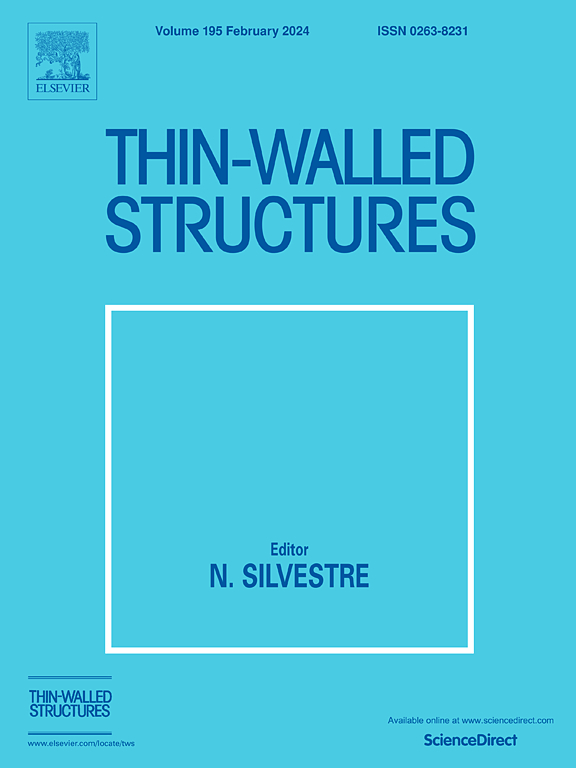Parametric study on flutter performance of three-cable-supported flexible photovoltaic support structure
IF 5.7
1区 工程技术
Q1 ENGINEERING, CIVIL
引用次数: 0
Abstract
Three-cable-supported flexible photovoltaic (PV) systems have broad application prospects due to their large span, economic efficiency, and strong adaptability to various terrains. Due to the low natural frequency of this structure and its cross-section being similar to that of a thin flat plate, it is prone to flutter instability. This work takes a typical three-cable-supported flexible PV support structure as an example and establishes a flutter analysis finite element model that considers aerodynamic characteristics. The flutter analysis is conducted using the full-order method, and the effects of key design parameters on the flutter critical wind speed (FCWS) are investigated. The design parameters include the pretension in cables, the height of triangular brackets, the mass and stiffness of PV modules, the span, and the damping ratio. Results indicate that the most effective method to increase the FCWS is to reduce the span. Increasing the pretension in the upper load-bearing cables significantly enhances the FCWS, while the pretension in the lower load-bearing cables has a limited effect on the FCWS. Increasing the height of the triangular brackets and reducing the mass of the PV modules can improve the flutter stability of the flexible PV support structure, while the stiffness of the PV modules has little impact on the FCWS. The damping ratio enhances the FCWS, demonstrating a linear correlation. The research findings can serve as a reference for future wind-resistant design of flexible PV support structures.
三缆支撑柔性光伏支架结构的扑动性能参数研究
本文章由计算机程序翻译,如有差异,请以英文原文为准。
求助全文
约1分钟内获得全文
求助全文
来源期刊

Thin-Walled Structures
工程技术-工程:土木
CiteScore
9.60
自引率
20.30%
发文量
801
审稿时长
66 days
期刊介绍:
Thin-walled structures comprises an important and growing proportion of engineering construction with areas of application becoming increasingly diverse, ranging from aircraft, bridges, ships and oil rigs to storage vessels, industrial buildings and warehouses.
Many factors, including cost and weight economy, new materials and processes and the growth of powerful methods of analysis have contributed to this growth, and led to the need for a journal which concentrates specifically on structures in which problems arise due to the thinness of the walls. This field includes cold– formed sections, plate and shell structures, reinforced plastics structures and aluminium structures, and is of importance in many branches of engineering.
The primary criterion for consideration of papers in Thin–Walled Structures is that they must be concerned with thin–walled structures or the basic problems inherent in thin–walled structures. Provided this criterion is satisfied no restriction is placed on the type of construction, material or field of application. Papers on theory, experiment, design, etc., are published and it is expected that many papers will contain aspects of all three.
 求助内容:
求助内容: 应助结果提醒方式:
应助结果提醒方式:


